|
This
past
October
under
the
auspices
of
Maine
State
Music
Theatre,
I
took
what
has
become
an
annual
theatre
pilgrimage
to
London
to
indulge
in
nine
plays.
Though
we
had
safely
braved
the
Covid
restrictions
and
protocols
of
the
prior
year
–
stringent
testing,
vaccination,
and
mask
requirements
-
this
Fall
was
so
much
more
a
cause
for
celebration.
The
West
End
was
once
again
bustling
with
lights
and
life,
the
theatres
full,
the
pubs
and
restaurants
overflowing,
testing,
vaccination
checks
and
masks
seemingly
a
thing
of
the
past.
Theatre
has
always
been
a
way
of
life
for
Londoners
from
Elizabethan
days
to
the
present;
people
of
every
walk
of
life
come
on
weekdays
and
weekends
to
enjoy
the
latest
plays.
Unlike
Broadway
where
ticket
prices
are
astronomical
–
averaging
several
hundred
dollars
a
seat
–
thanks
to
heavy
government
subsidies
for
the
arts,
Londoners
can
obtain
good
seats
(stalls)
for
reasonable
sums
like
52
pounds
($58),
making
it
more
likely
theatregoers
can
attend
with
some
regularity.
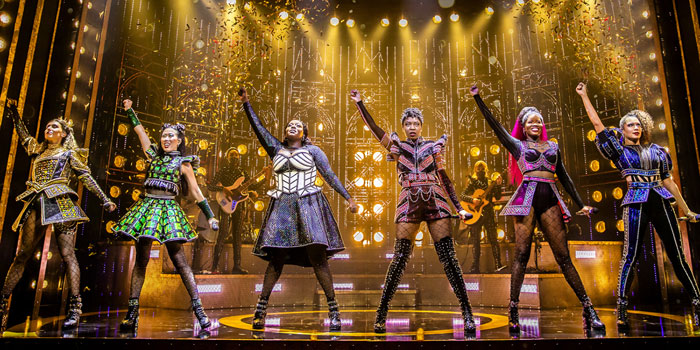
In addition to the Stratford-London Globe experience (chronicled in last
month's issue), we enjoyed seven other plays several of which had
serendipitous thematic connections. Our first night marked a return to see
the rock musical Six at the vaudeville Theatre on the Strand. Since first
seeing it in London two years ago, the Toby Marlow/Lucy Moss concert
-style show about the wives of Henry VIII has opened on Broadway and US
and UK National Tours and played the West End for three years (barring
Covid closures). The decibel level at the Vaudeville Theatre is better
controlled than in the earlier production, making the lyrics of the wives'
sung monologues more comprehensible and effective. The performance
we saw used several Swings and alternates, while the most compelling
performance came from Amy Di Bartolomeo as a feisty, sensual, hot
-blooded Catherine of Aragon. Also notable was the truly fierce, all-female
musical ensemble led by Music Director Lauren Hopkinson on keys.
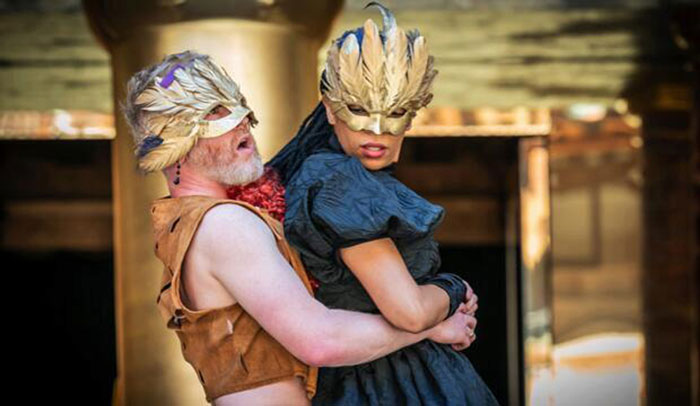
In keeping with the Tudor theme, a second visit to Shakespeare's Globe in
London was to see the Bard's rarely performed history play, Henry VIII,
presented in a provocative, outrageously funny and bawdy updating by
Hannah Khalil. A prim little sign at the entrance warned theatregoers with
the tongue-in- cheek understatement the Brits are known for: "Play
contains scenes of naughtiness of a sexual nature." The "naughtiness" in
question included an orgiastic scene at Henry's court, complete with a five
-foot golden dildo and equally astonishing golden penises. The adaptation
adds songs, several set to Shakespeare's own love sonnets, interspersed into
the action with irony. Director Amy Hodge preserves the best elements of
Shakespeare's text - Katherine's speeches, Cardinal Wolsey's defrocking
speech, Buckingham's farewell before his execution, as well as Henry's
wrestling with his conscience and his arguments with Katherine. These are
surrounded by the comic observations of courtiers and commoners as the
play follows its historical path to the birth of Elizabeth I, Shakespeare's
patron, with whom he ends the play in a kind of apotheosis.
The Wooden O is transformed into a garish golden court with glistening
golden panel doors, an oversized gilded throne and kitschy blow-up chairs
for the two female observers. The entire cast demonstrates their
identification with the material and its revisionist concept. Adam Gillen is a
wiry, anxiety-ridden, narcissistic Henry, with high-pitched voice, mincing
gait, and mercurial mood swings. Bea Segura makes a mesmerizingly regal
and sympathetic Katherine – proud, yet vulnerable, a true champion for
the rights of her sex. Jamie Ballard is coldly Machiavellian as Wolsey in
power and then heart wrenching in disgrace. Jonah Russell makes
Buckingham a sympathetic martyr, while Janet Etuk portrays Anne Bullen
as a pawn in a game of progeny. The five-piece instrumental ensemble
adds to the flow of the narrative with Genevieve Dawson as a troubadour
-esque singer voicing the haunting ballads that tie the work together.
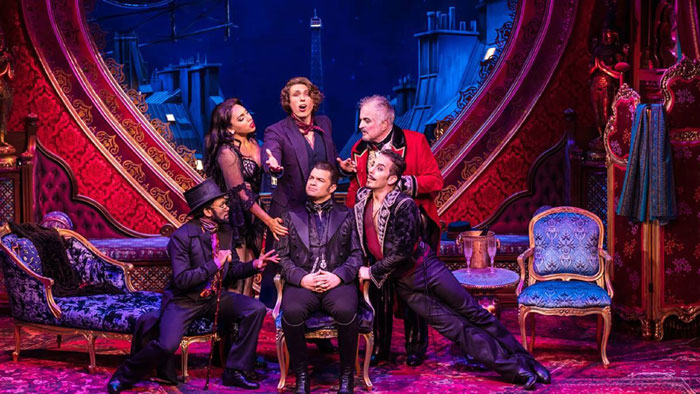
Another pair of musicals focused on the demi-monde of cabaret life in late
19th century Paris and Nazi Germany: Moulin Rouge and Cabaret - each in
visually decadent and luxurious productions. Moulin Rouge is essentially a
Broadway transfer with the same creative team and same opulent
production. The Piccadilly Theatre has been transformed into Montmartre
with the gigantic blue elephant and full-sized windmill suspended from the
boxes, the glittering drops, high-flying trapezes, VIP seating in a recessed
pit surrounded by catwalks and a passarelle to suggest the cabaret
atmosphere. Elsewhere in the theatre, champagne flows everywhere, as
patrons are encouraged to bring libations back to their seats. The same
overcharged score and Sonya Tayeh's high-energy, sensual choreography
prevail, along with Alex Timbers' kinetic direction. Only the cast is different
, and while Aaron Tveit and Danny Burstein set a hugely high bar for their
roles as Christian and Zidler respectively, newcomer Jamie Boygo as
Christian is a delightful surprise with a strong voice and a disarming
presence, while Clive Carter captures the manipulatory nature of Harold
Zidler perfectly. Liisi LaFontaine proves luminous and touching as the
heroine Satine, more vulnerable and believable as a consumptive more
empathetic than Karen Olivo on Broadway. Jason Pennycooke (Toulouse
Lautrec), Elia LoTauro (Santiago), and Simon Bailey (Duke) turn in strong
supporting performances. One envisions a long West End run for this
extravaganza that, nonetheless, has so much heart.
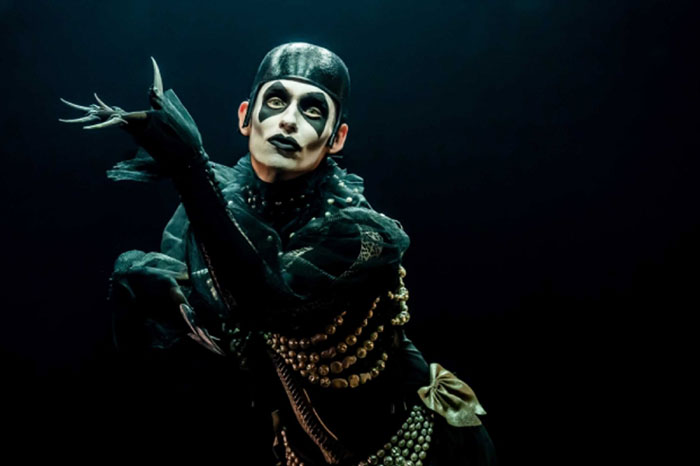
A similar effort has been made to transform the much more intimate
Playhouse Theatre into the 1930s Kit Kat Club for an innovative
performance of Kander and Ebb's Cabaret. The theatre itself has been
reconfigured into virtual theatre-in-the-round with the stage (and its small
turntable) at center and seating all around, including a gallery level. The
producers have sought to simulate for the theatregoer the experience of
attending a floor show at the Kit Kat Club. Ticket holders enter an hour
before, are led down garishly lit stairways into the cramped basement of
the theatre where small stages have been erected, and scantily clad men
and women dance and gyrate in a suggestive manner. Champagne flows
from small bars, as well as schnapps, and hors d'oeuvres are available – all
of which can be brought into the theatre. Directed by Rebecca Frecknall,
the production spares none of the darker undertones of the book with its
sexual decadence and imminent political catastrophe. Julia Cheng's
choreography has a raw sensuality with poses sometimes borrowed from
works as groundbreaking as Diaghilev's Rite of Spring. Tom Scutt's set
makes use of the turntable as a crazy kind of carousel which whisks the
actors around in their mad world. Costumes are period glamorous and
provocative. The original cast, headed by Eddie Redmayne took home quite
a few Olivier Awards. The current ensemble is tight-knit and focused on
the drama, if less on stunning vocalism. Callum Scott Howells is an
insidious, androgynous chameleon as the Emcee; Madeleine Brewer
understands Sally Bowles' shallow heart, but she does not deliver the vocal
fireworks one expects especially in "Cabaret." Vivien Parry as Frau
Schneider and Richard Katz as Herr Schultz do create some genuinely
poignant moments and Parry delivers her song, "So what?," with Lotte
Lenya-like gusto. Sid Sagar is an appealingly forthright Cliff Bradshaw.
When he voices those memorable lines about a "city called Berlin in a
country called Germany and it was the end of the world," we feel as if we
have truly descended into a circle of hell, yet somehow lived to tell the tale.
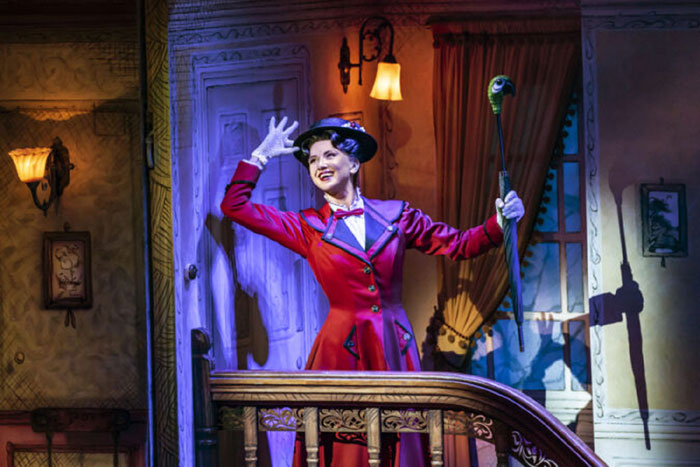
The remaining three shows included two musicals and a straight drama.
The perennial favorite Mary Poppins was in its last holiday weeks at the
Prince Edward Theatre. The sumptuous production, directed by Richard
Eyre, has all the bells and whistles needed to make this a stylish revival,
and it pulls out all the stops with the flying tricks, culminating in Mary's
farewell flight from stage across the audience to an upper box. For this
viewer, who has seen this show performed with so much more glorious
vocalism and heart, the competent cast seemed to pale in comparison. Zizi
Strallen as Mary lacked the tartness and acerbic wit of the character,
though Charlie Stemp made a lithe and cheeky Bert. Charlie Anson as Mr.
Banks did not convince at all in his transformation, while Amy Griffiths was
a suitably proper Mrs. Banks. In luxury cameo casting, eighty-nine- year
-old Petula Clark graced the stage as the Bird Woman- frail in body and
voice but with a mammoth presence, nonetheless.
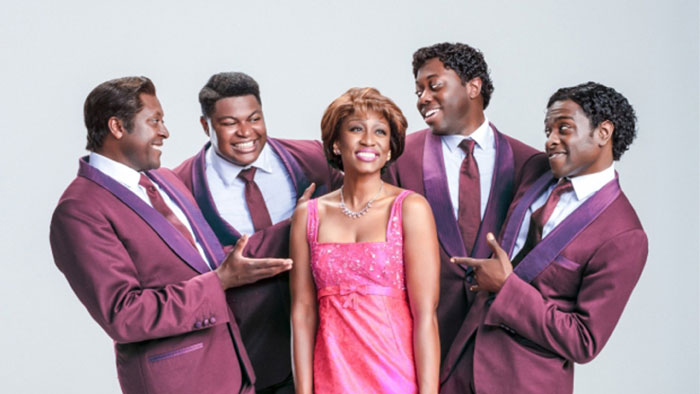
The Drifter's Girl, a new juke box musical based on the life of Faye
Treadwell and the American singing group, The Drifters, in contrast to the
other musicals seen on the trip, has been modestly produced with a small
cast and minimalist set. The simple curtain which greets the audience at
the Garrick Theatre depicts a 33-vinyl record of one of the group's hits, and
the numerous locales of the story from New York to London are depicted
with lit geometric designs and rear projections and a few props. (Anthony
Ward, set designer). Fay Fullerton's costumes, however, add glamour, glitz,
and color. Jonathan Church directs the versatile five-person cast with
Adam Bernard, Tarinn Callender, Matt Henry, and Tosh Wanogho-Maud
playing a wide variety of male roles and delivering all the Drifters' hit
songs. As Faye Treadwell, Felicia Boswell serves as the heartbeat of the
piece, radiant, strong-willed, and vocally dazzling. Five young girls play
Tina Treadwell, her daughter, with Aurora Baptiste delivering a charming
performance on the night I attended. The Drifter's Girl is likely headed for
New York, where, judging by the enthusiastic West End reception, it should
find a receptive audience.
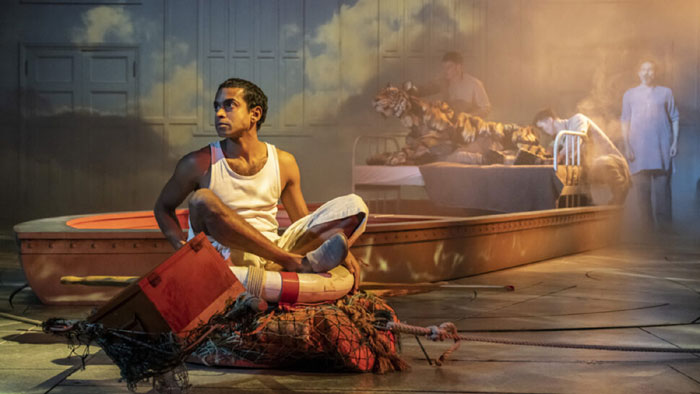
The last play was a new dramatization of The Life of Pi, already in process
to transfer to Broadway. This haunting fable that has been an acclaimed
book by Yann Martel and an Ang Lee movie comes to life on stage by virtue
of some ancient theatrical devices – most notably the use of large puppets,
as well as masks, colorful costumes, and projections (Tim Hatley, designer)
. Lola Chakrabarti adapts the novel beautifully to the stage, making Pi the
narrator and allowing him to tell his story of shipwreck and survival to a
self-interested insurance agent and a sympathetic diplomatic envoy, all the
while blurring the lines between fact and fiction. The various animals of
the tale are vividly created by puppet designers Nick Barnes and Finn
Caldwell together with the dancers who inhabit the larger-than-life forms,
moving their features and limbs with hair-raising realism. Tightly directed
by Max Webster, the tension of the tale is maintained until the final
revelation. On the evening I attended, Pi was portrayed by the alternate,
Chirag Benedict Lobo, who gave a performance of such gripping intensity
that one left in awe. Saikat Ahamed as Pi's gentle mother, Ameet Chana as
his father, and Kazim Tosin Amore as the murderous Cook also gave
outstanding performances. The ensemble who animated the various
puppets were brilliant in their fluid movement, creating the illusion of
human form blending with animal and bringing to life truly
anthropomorphic creatures – the most stunning of which is the Bengal
Tiger, Richard Parker, inhabited by three actors. The Life of Pi is such a
timeless piece – a fable about the spiritual quest of a boy who endures the
unendurable and wrests meaning from it. Told with a non-Western
theatrical aesthetic – it reminds of Kabuki and the Peking Opera – it
elegantly fuses dance and drama. Though the story itself is filled with
harsh realism and there are some brutally realistic scenes, the message
remains an uplifting one. And among its other beauties, The Life of Pi
allows for a truly diverse cast with its Indian family at the core and other
roles (especially the puppets) able to be played by a wide range of actors.
If diversity is written into the fabric of The Life of Pi, one of wonderful
things about West End theatre, in general, is the diversity of cast, creatives,
and crew. In virtually all the shows we saw, whether consciously part of
the script or simply an unwritten precept, casting was, for the most part
color-blind, and creative rosters boasted artists of wide-ranging heritages.
In the darkened theatres where the magic takes place and out on the
bustling streets of the West End crowds from all walks of life and
backgrounds come together to this little corner of a big city to hear stories
being told on stage – stories rare and familiar, imagined and real – stories
that remind them of their common humanity.
|